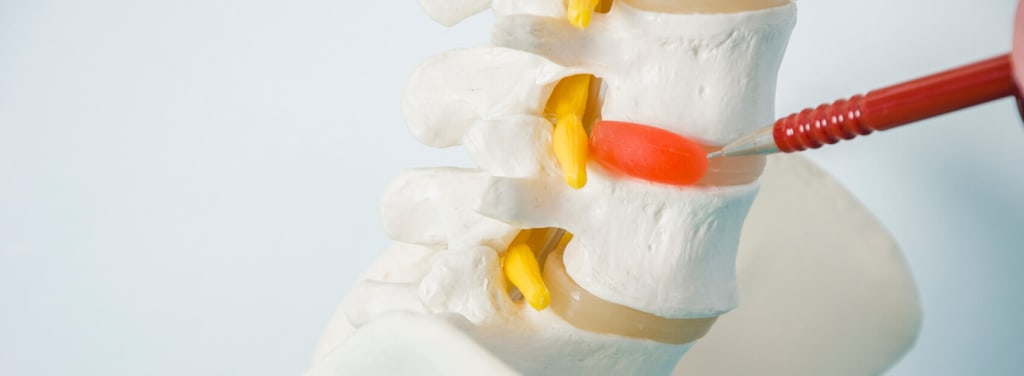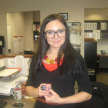Everything You Should Know About Herniated Discs
In this article, we will explore everything you should know about herniated discs, including their causes, symptoms, diagnosis, and treatment options.

Back pain is an increasingly common problem that affects millions of people all over the world. A herniated disc is one of the most common causes of back pain. A herniated disc, also known as a slipped or ruptured disc, can be excruciatingly painful and incapacitating. In this article, we will explore everything you should know about herniated discs, including their causes, symptoms, diagnosis, and treatment options.
What is a herniated disc?
To understand a herniated disc, let's first analyze the structure of the spine. The spine is composed of a sequence of bones called vertebrae that are placed on top of each other. An intervertebral disc is a cushion-like tissue located between each vertebra. These discs work as shock absorbers, allowing the spine to move and be flexible.
A herniated disc develops when the disc's soft, gel-like center, known as the nucleus pulposus, protrudes through its tough outer covering, known as the annulus fibrosus. This protrusion has the potential to irritate surrounding nerves, resulting in pain, numbness, or weakness in the affected area.
Causes of herniated discs
Herniated discs can be caused by a variety of reasons, including:
- Age-related wear and tear: As we become older, the discs in our spine lose flexibility and become more prone to injury. Natural aging can result in disc degeneration, leaving them more vulnerable to herniation.
- Trauma or injury: A herniated disc can be caused by a sudden traumatic event, such as a fall or lifting a heavy object. Improper lifting practices can also contribute to disc herniation, especially when paired with repetitive actions.
- Poor posture and body mechanics: Prolonged sitting or standing in uncomfortable positions can put unnecessary strain on the spine, eventually leading to disc herniation.
Symptoms of herniated discs
Depending on the location and degree of the herniation, the symptoms of a herniated disc might vary. Typical symptoms include:
- Back pain: The most common symptom of a herniated disc is localized pain in the affected area of the spine. Movement, coughing, or sneezing may aggravate the pain.
- Radicular pain: When a herniated disc compresses a nerve root, pain can radiate along the affected nerve. A herniation in the lower back, for example, can produce sciatica or pain that runs down the leg.
- Numbness and tingling: Compression of spinal nerves can cause numbness, tingling, or a pins-and-needles feeling in the arms or legs.
Diagnosis and treatment options
If you think that you may have a herniated disc, it is better to make an appointment with a doctor to get an accurate diagnosis and medical care as soon as possible. A doctor usually conducts a complete physical examination and may request further tests to confirm the diagnosis, such as X-rays, magnetic resonance imaging (MRI), or computed tomography (CT) scans.
Herniated disc treatment methods differ based on the severity of the symptoms and the individual's general health. Among the non-surgical therapy options are:
- Rest and activity modification: Avoiding activities that aggravate symptoms, as well as taking frequent rest periods, can help reduce pain and promote recovery.
- Physical therapy: Physical therapy includes specific exercises and stretches that can help strengthen the back and abdominal muscles, increase flexibility, and relieve pressure on the damaged disc.
- Pain management: Your doctor can recommend over-the-counter or prescription painkillers to treat the pain and inflammation caused by a herniated disc.
- Epidural steroid injections: In some cases, a doctor can administer corticosteroid injections near the affected nerve root to decrease inflammation and relieve pain.
Surgery may be considered if non-invasive treatments are unsuccessful or if the symptoms get worse. Depending on the degree and location of the herniation, surgical options include discectomy, laminotomy, or spinal fusion.
Preventing herniated discs
Despite the fact that herniated discs may not always be avoidable, there are things you may do to lower your risk:
- Maintain proper posture: Use optimal body mechanics, especially while lifting heavy objects, to prevent strain on the spine.
- Exercise on a regular basis: Perform exercises that improve core strength, flexibility, and general spinal health.
- Take regular breaks: Instead of sitting or standing for extended periods of time, take breaks to stretch and shift positions.
- Use ergonomic equipment: Make sure that your workspace and furniture are ergonomically constructed to promote proper posture.
The bottom line
Herniated discs can cause severe pain and suffering, negatively compromising one's quality of life. People can make educated choices about herniated discs by being aware of the causes, symptoms, diagnoses, and available treatments. If you suspect a herniated disc, contact a specialist to decide the best course of action. Remember that early detection and treatment can dramatically improve results and put you on the path to recovery.
About the Creator
Amelia Grant
I am journalist, and blogger.






Comments
There are no comments for this story
Be the first to respond and start the conversation.